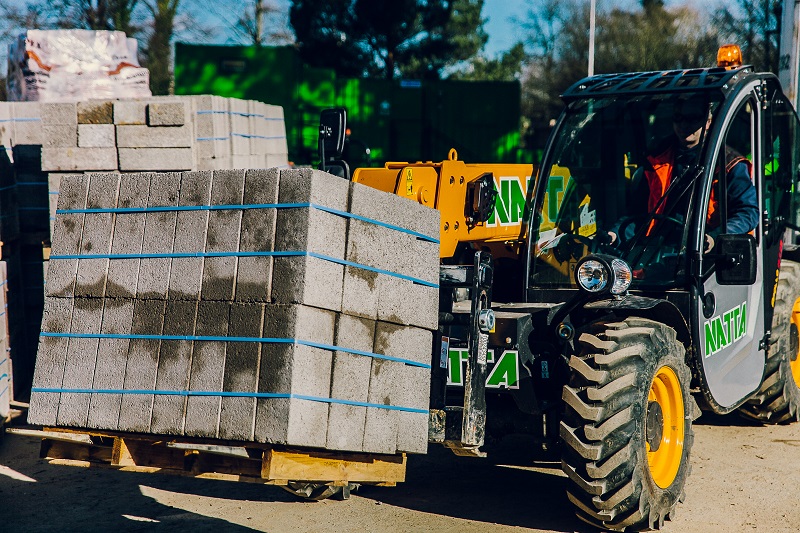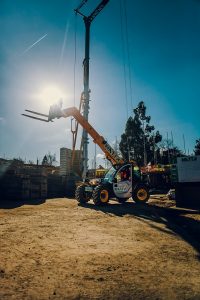
A Dieci Apollo 25.6 R is proving a nimble addition to the Natta plant fleet on a site in Royal Berkshire. Construction Plant News reports.
The construction of a 64-bed nursing home on the site of a former office block is typical of the compact brownfield sites, with limited access and manoevrability, that contractors are increasingly tasked with tackling.
Telehandlers, of course, will find their true home in residential building projects, and with George Osbourne donning his hi vis and hard hat to express his commitment to new build housing at every available opportunity the market for this class of machine in the UK construction sector is certainly on the rise.
Natta already owns an extensive fleet of its own machinery and equipment, including the IGO50 Crane, also in evidence on the Bracknell site. In fact, the company has invested over £1 million in plant in order to achieve its aim of growing the Natta Group to a £70 million turnover in the next three years, and amongst these additions is the Dieci Apollo 25.6R.
There is an old saying that simplicity is the ultimate sophistication, and for many in the market for the latest in construction plant, it is an adage that rings true.
 If an end user can dispense with the added complexity of Diesel Particulate Filters and Selective Catalytic Reduction systems, for instance, then all the better, and for vehicles sold in Europe in the 18 to 36 kW range, Stage 3 A engines are still the benchmark – and that means no DPF or SCR.
If an end user can dispense with the added complexity of Diesel Particulate Filters and Selective Catalytic Reduction systems, for instance, then all the better, and for vehicles sold in Europe in the 18 to 36 kW range, Stage 3 A engines are still the benchmark – and that means no DPF or SCR.
Of course, even with a simplified level of engine specification, the hire and construction markets will still need the necessary muscle to do the job, and on the Natta site in Royal Berkshire the mechanical injection Apollo 25.6 R, with its 36.5 kW/50 hp Kubota engine, was demonstrating that it could do just that.
The Italian manufacturer’s range of machines now covers every conceivable application. The Apollo 25.6R, however, sits in the kind of compact class that a project like the Bracknell one demands.
Vital statistics include a width of just 1.84 metres in a machine that weighs 4,700kg and, whilst power and range of application might be more limited in comparison to its 55.4 kW bigger sibling in the Apollo portfolio, there will be few who would notice the difference.
The 25.6R has a maximum speed of 24km/h, for instance, whereas the 55.4kW machine will reach 30km/h, but in the restricted space available to an operator on which the Natta Dieci was employed the lower figure is all you would ever need.
Similarly, towing capacity has a top end figure of 3,400 kg on the smaller capacity machine compared to 4,400 kg on the 55 kW.
The engine’s maximum torque of 170Nm @ 1,600rpm provides a capacity of 2,500kg and a maximum lifting height of 5.78m, all in a compact package featuring vital statistics of 4.10m in length, 1.84m in width and 1.94m in height.
The lifting height will extend to 5.78m with a capacity at that reach of 1.7t, and a maximum outreach of 3.25m.
Capacity at maximum outreach is 0.8t. Ask any operator on site what would be top of their wish list for almost any class of construction plant and good visibility from the cab would invariably be their first response, and the man behind the controls at the Natta site reports that the Dieci scores highly in this regard.
Further in-cab comfort and convenience can be found in the list of extras, such as radio, pneumatic seat, and work lights, whilst other options include electric contact on the boom head, and a number of accessories with quick coupling.
For more information visit www.dieci.co.uk








